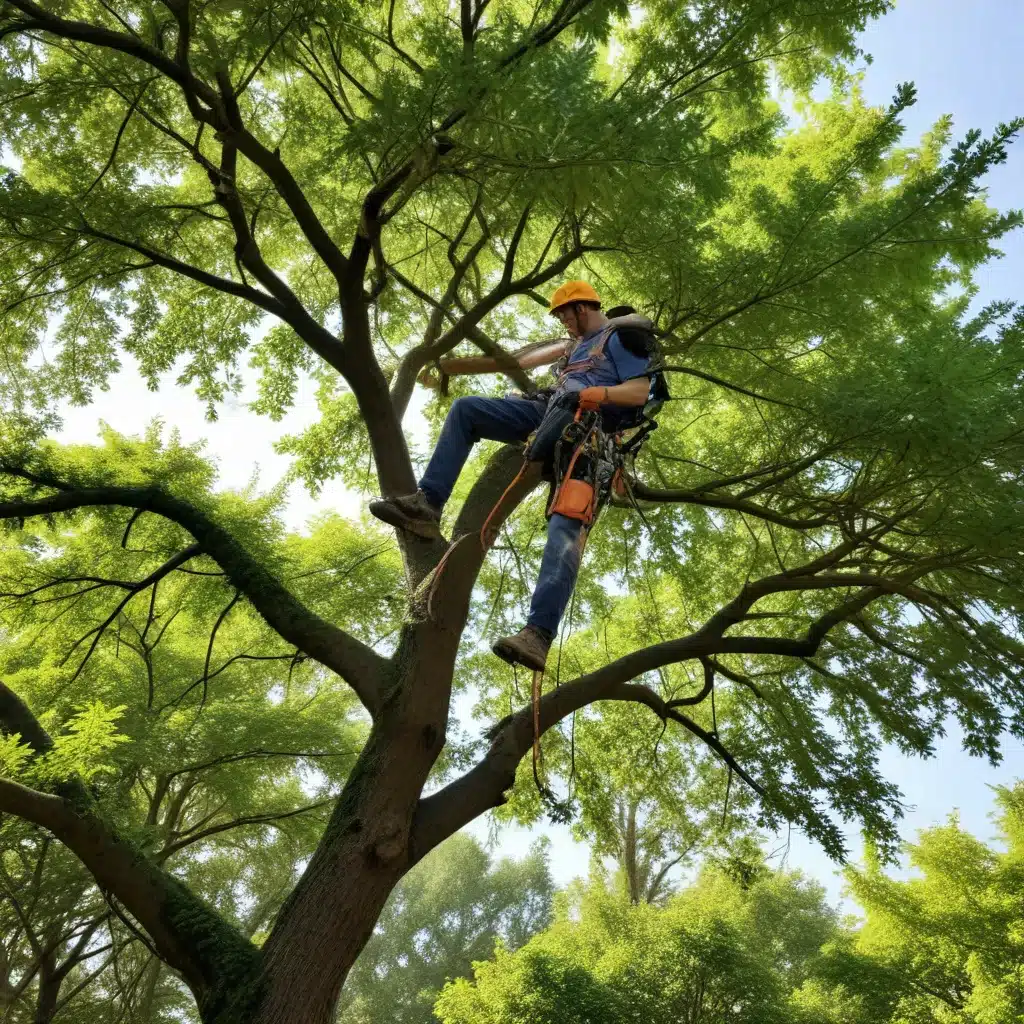
As a tree care specialist for TriCounty Tree Care, I’m often asked about the merits of do-it-yourself (DIY) tree trimming versus enlisting the services of professional arborists. The decision can have far-reaching implications for the long-term health and aesthetics of your landscape. In this comprehensive guide, we’ll explore the nuances of tree canopy maintenance, delving into the benefits and potential pitfalls of each approach.
Tree Trimming Approaches
DIY Tree Trimming
For the homeowner with a green thumb and a penchant for hands-on projects, the allure of DIY tree trimming can be strong. With some basic tools and a bit of research, it’s possible to tackle minor pruning tasks and maintain the overall shape of your trees. However, this approach requires careful consideration of the potential risks and the specific needs of your trees.
Professional Tree Trimming
On the other hand, entrusting your trees to the care of certified arborists can provide a range of advantages. These experts possess the knowledge, equipment, and expertise to navigate the complexities of tree biology, ensuring the long-term health and structural integrity of your landscape. By leveraging their skills, you can avoid common mistakes and safeguard your trees against potential harm.
Tree Canopy Health
Factors Affecting Canopy Health
The health and vitality of your tree’s canopy are crucial to its overall well-being. Factors such as nutrient deficiencies, pest infestations, and environmental stressors can all contribute to a decline in canopy health. Proper trimming and pruning techniques play a vital role in addressing these issues and promoting robust growth.
Benefits of a Healthy Canopy
A thriving, lush canopy not only enhances the aesthetic appeal of your property but also provides numerous ecological benefits. A dense canopy can help regulate temperatures, improve air quality, and support local wildlife habitats. By maintaining the health of your trees, you’re investing in the long-term sustainability of your landscape.
Tree Trimming Techniques
Proper Pruning Methods
Effective tree trimming requires a nuanced approach that considers the unique needs of each species. Skilled arborists employ techniques like thinning, crown reduction, and selective removal to promote structural integrity, air circulation, and overall tree health. Improper pruning, such as topping or flush cutting, can lead to a host of issues, from weakened branches to increased susceptibility to disease.
Seasonal Trimming Considerations
The timing of tree trimming is equally important. Most species respond best to dormant-season pruning, when the risk of disease and pest infestations is lower. However, certain trees, such as fruit trees, may require more frequent attention to optimize their productivity and appearance.
Aesthetic and Functional Considerations
Enhancing Visual Appeal
In addition to maintaining canopy health, tree trimming can also serve to enhance the visual appeal of your landscape. Judicious pruning can shape the tree’s form, accentuate its natural features, and ensure that it complements the overall design of your property.
Improving Structural Integrity
Proper tree trimming plays a crucial role in maintaining the structural integrity of your trees. By identifying and removing weak, damaged, or interfering branches, you can reduce the risk of storm damage and ensure the long-term stability of your landscape.
Safety and Regulations
Hazard Mitigation
Tree trimming is not without its risks, particularly when dealing with large or mature specimens. Professionals are equipped with the necessary safety gear, equipment, and expertise to navigate these challenges, minimizing the potential for personal injury or property damage.
Compliance with Local Ordinances
In many areas, tree trimming and removal are subject to local regulations and permitting requirements. Engaging with a reputable arborist can help ensure that your tree care activities comply with these guidelines, avoiding potential fines or legal complications.
Cost Factors
DIY Expenses
While the DIY approach may seem more cost-effective upfront, it’s essential to consider the long-term implications. Investing in the appropriate tools, personal protective equipment, and the time required to properly maintain your trees can quickly add up. Additionally, the risk of causing inadvertent damage to your trees or personal property can lead to significant repair or replacement costs down the line.
Professional Service Costs
Engaging the services of a professional tree care company may come with an initial investment, but the benefits often outweigh the costs. Certified arborists have the knowledge and resources to identify and address potential issues before they escalate, potentially saving you money in the long run. Furthermore, their expertise can help you avoid costly mistakes and ensure the ongoing health and vitality of your landscape.
Environmental Impact
Sustainable Practices
Responsible tree care extends beyond the individual tree, encompassing the broader environmental considerations. Professionals versed in sustainable arboricultural practices can minimize the ecological footprint of their work, prioritizing waste reduction, habitat preservation, and the overall resilience of the local ecosystem.
Waste Disposal Considerations
The byproducts of tree trimming, such as branches and foliage, must be properly disposed of to avoid potential environmental hazards. Professional tree care companies often have established protocols for responsible waste management, ensuring that your tree care activities align with local regulations and best practices.
Ultimately, the decision to tackle tree trimming yourself or enlist the services of a professional arborist is a nuanced one, with various factors to consider. By understanding the implications of each approach, you can make an informed choice that safeguards the health and beauty of your trees, while also aligning with your personal preferences and budget. For more information or to schedule a consultation, please visit TriCounty Tree Care.


